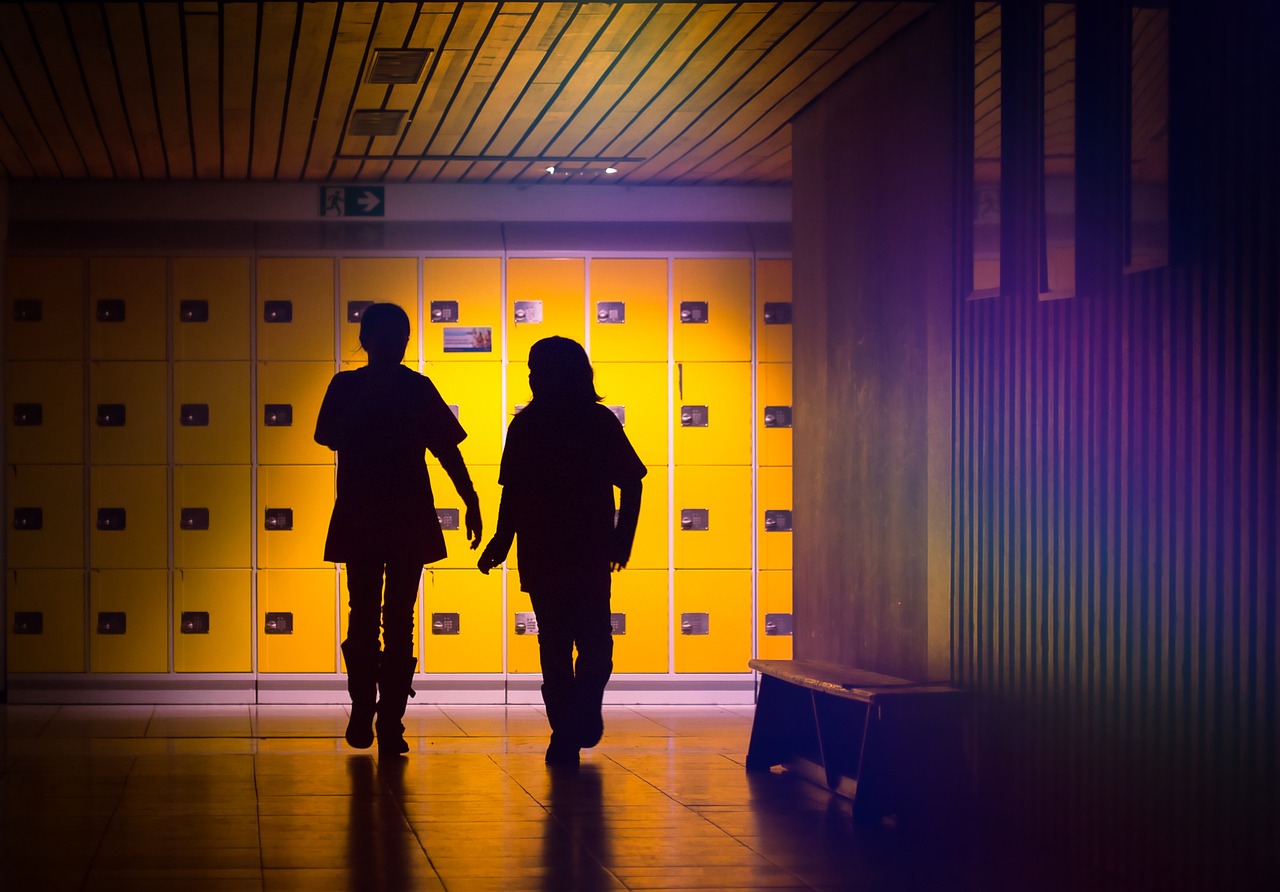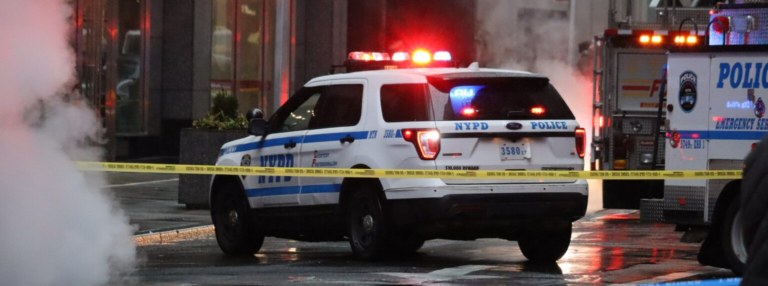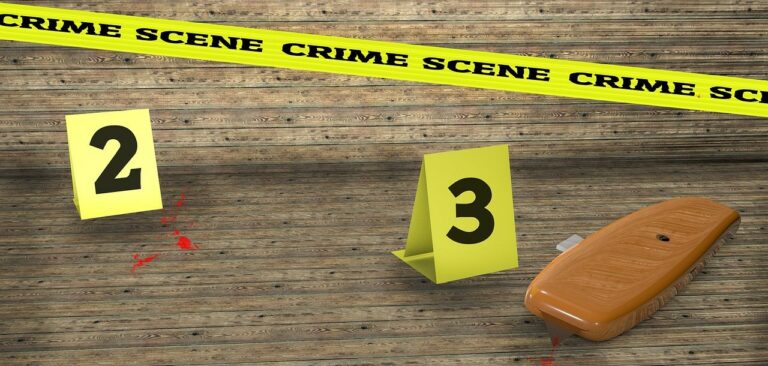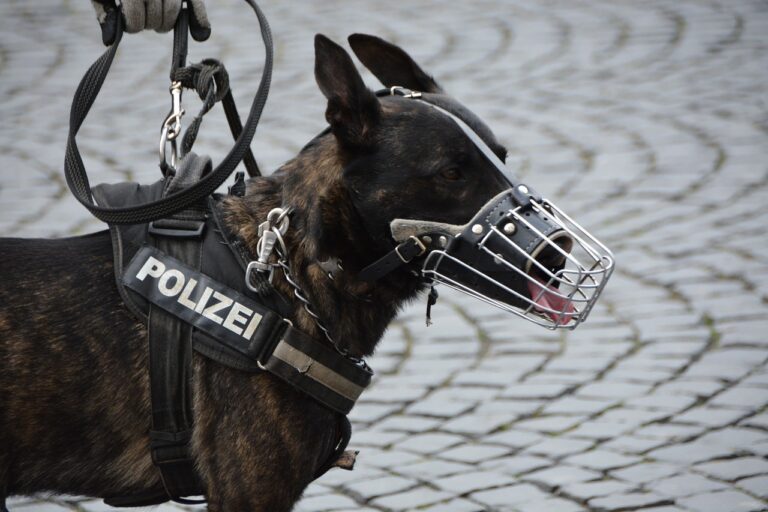10 Critical Steps in CSI Role in a Mass Shooting Incident
In the wake of a mass shooting incident, chaos reigns supreme. Amidst the tragedy and confusion, two group of professionals stands ready to bring order to the chaos: Crime Scene Investigators (CSIs) and Law Enforcement Officers. These dedicated individuals play a vital role in collecting and analyzing evidence to uncover the truth behind the violence.
The Impact of Mass Shooting Incident
Mass shootings have become all too common in today’s society, leaving a trail of devastation in their wake. From schools and workplaces to public spaces and places of worship, no community is immune to the threat of gun violence. Each incident leaves behind a complex web of evidence that must be carefully untangled to piece together the events that transpired.
The Crucial Role of CSIs
In the aftermath of a mass shooting incident, CSIs are among the first responders to arrive at the scene. Their primary objective is to preserve evidence and begin the process of unraveling the events that led to the tragedy. With attention to detail and a steadfast commitment to justice, CSIs and law enforcement officers play a crucial role in bringing perpetrators to justice and providing closure to victims and their families.
Table of Contents
The Complexity of Crime Scene Investigation
Crime scene investigation is a complex and multifaceted process that requires a combination of scientific expertise, technical skill, and attention to detail. CSIs must document the scene, collect physical evidence, and analyze data to reconstruct the sequence of events and help identify those responsible for the crime.
Moreover, in the case of a mass shooting incident, the stakes are even higher, as the sheer volume of evidence and the emotional toll of the incident can present unique challenges for investigators.
In this article, we will explore the comprehensive role of CSIs in a mass shooting incident, from their arrival at the scene to the complex process of evidence collection and analysis. We will get into the importance of setting up a mobile CSI tent or lab nearby and examine the various types of evidence that CSIs must collect and document. Through it all, we will highlight the critical role that CSIs play in unraveling the chaos of a mass shooting and bringing perpetrators to justice.
Preparation Before Arrival
Before Crime Scene Investigators (CSIs) even arrive at the scene of a mass shooting incident, thorough preparation is essential. This preparation ensures that they have the necessary equipment, resources, and mindset to handle the complexities of the situation effectively.
Essential Equipment Checklist for CSI Response to Mass Shooting Scenes
When responding to mass shooting scenes, Crime Scene Investigators (CSIs) should ensure they have the necessary equipment to conduct thorough evidence collection and documentation. Here’s a list of essential equipment that CSIs should check for and have in their possession:
- Protective Gear:
- Gloves: Disposable gloves to prevent contamination of evidence and protect against biohazards.
- Masks: Respiratory masks to protect against airborne contaminants and hazardous materials.
- Protective Clothing: Disposable coveralls or protective suits to minimize exposure to blood, bodily fluids, or other contaminants.
2. Photography Equipment:
- Digital Camera: High-resolution camera for documenting the scene, evidence, and injuries.
- Tripod: Sturdy tripod for stabilizing the camera and capturing clear, focused images.
- Flashlight: Powerful flashlight for illuminating dark areas and capturing detailed photographs.
3. Evidence Collection Kits:
- DNA Collection Kits: Swabs, tubes, and packaging materials for collecting DNA samples from evidence.
- Fingerprint Kits: Brushes, powders, lifting tape, and cards for collecting and preserving fingerprints.
- Evidence Markers: Cones, flags, or placards to mark the location of evidence within the scene.
- Packaging Materials: Sealable bags, envelopes, and containers for storing and transporting collected evidence.
4. Measuring and Documentation Tools:
- Measuring Tape: Flexible measuring tape for documenting distances and dimensions within the scene.
- Sketching Supplies: Graph paper, pencils, and rulers for creating sketches or diagrams of the scene.
- Notebooks: Waterproof notebooks for recording observations, measurements, and other relevant information.
5. Specialized Equipment:
- Metal Detectors: Handheld or walk-through metal detectors for locating metallic evidence such as bullets or weapons.
- Trajectory Kits: String, laser pointers, or trajectory rods for analyzing bullet trajectories and identifying shooter positions.
- Luminol: Chemical reagent used to detect the presence of bloodstains, even when invisible to the naked eye.
6. Communication Devices:
- Radios: Two-way radios or communication devices for coordinating with other responders and maintaining contact with the command center.
- Mobile Phones: Personal mobile phones for contacting supervisors, requesting additional resources, or documenting evidence.
7. Personal Items:
- Identification: Government-issued identification and credentials for verifying identity and accessing secure areas.
- Water and Snacks: Bottled water and non-perishable snacks for maintaining hydration and energy during long hours at the scene.

In addition to physical equipment, CSIs must also be mentally prepared to handle the emotional and psychological challenges of a mass shooting scene. They must remain focused, composed, and resilient in the face of overwhelming circumstances.
By ensuring they have the appropriate equipment and resources, CSIs can effectively conduct evidence collection and documentation at mass shooting scenes, ultimately contributing to the successful investigation and prosecution of those responsible.
Coordination with Law Enforcement and Medical Personnel
Prior to a mass shooting incident, CSIs have been trained with law enforcement and medical personnel to ensure a coordinated response. This involves briefing sessions, joint planning meetings, and communication to ensure that all responders are on the same page and ready to work together effectively.
Finally, CSIs review protocols and procedures for handling mass shooting incidents to ensure compliance with standard operating procedures and best practices. This includes familiarizing themselves with protocols for securing the scene, documenting evidence, and coordinating with other agencies.
By taking these preparatory steps, CSIs can approach the scene of a mass shooting with confidence, competence, and readiness to fulfill their crucial role in the investigative process.
Arrival at the Scene
When Crime Scene Investigators (CSIs) arrive at the scene of a mass shooting, they are confronted with a daunting task: to unravel the chaos and collect evidence that will ultimately lead to the identification and prosecution of those responsible for the crime. Their arrival marks the beginning of a meticulous and methodical process that will unfold over the coming hours and days.
Safety Assessment
The safety of all personnel, including CSIs, is paramount upon arrival at the scene. CSIs must assess the safety and security of the environment before proceeding with any investigative activities. This may involve working closely with law enforcement officers to secure the perimeter of the scene and ensure that no immediate threats to safety exist.
Scene Assessment and Documentation
Once the scene is deemed safe, CSIs begin the process of assessing and documenting the area. This includes:
- Establishing boundaries: CSIs help define the boundaries of the crime scene to ensure that all relevant evidence is properly documented and collected.
- Photography: Photographs are taken to document the overall layout of the scene, as well as any significant physical evidence or environmental factors.
- Sketching: Sketches or diagrams of the scene may be created to provide a visual representation of the layout and placement of evidence.
Initial Evidence Identification
During the initial assessment, CSIs identify and prioritize areas of interest based on the presence of potential evidence. This may include:
- Bloodstains: CSIs identify and document bloodstains, noting their location, size, and pattern, which may provide valuable insights into the dynamics of the shooting.
- Bullet casings and projectiles: CSIs search for and collect bullet casings and projectiles, which can provide important clues about the type of firearm used and the direction of gunfire.
- Personal effects: CSIs document and collect personal effects such as clothing, jewelry, and cell phones, which may contain trace evidence or provide clues about the victims and perpetrators.
Establishing Boundaries
Crime Scene Investigators begin by setting up boundaries around the crime scene to guarantee that all relevant evidence is secured and accurately recorded. This often includes the use of physical barriers, like tape or cones, to mark the edges of the scene and protect the evidence from contamination or interference.

Photography
Photography is a fundamental aspect of crime scene documentation. CSIs use quality high-definition cameras to capture detailed images of the scene from multiple angles, including overall shots as well as close-ups of specific areas or pieces of evidence. Photographs serve as a visual record of the scene’s condition and the placement of evidence at the time of discovery.
Sketching and Diagramming
In addition to photography, CSIs create sketches or diagrams of the scene to provide a visual representation of its layout and key features. These sketches can help investigators better understand the spatial relationships between different elements of the scene and aid in the reconstruction of events.
Note-Taking and Documentation
Detailed note-taking is essential throughout the CSI’s time at the scene. CSIs record observations, measurements, and other relevant information in their notebooks to ensure accurate documentation of all evidence and activities. This information may include the location and condition of evidence, observations about the scene’s condition, and any actions taken by CSI personnel.
Chain of Custody Procedures
Maintaining a clear chain of custody for all evidence is critical to its admissibility in court. CSIs carefully document the handling and movement of each piece of evidence, from its initial discovery at the scene to its eventual storage and analysis in the laboratory. This documentation helps ensure the integrity and reliability of the evidence throughout the investigative process.
Collaboration and Communication
Throughout the scene management process, CSIs collaborate closely with other responders and investigative team members. Clear communication and coordination are essential for ensuring that all aspects of the investigation are addressed effectively and that no important details are overlooked.
By managing and documenting the scene of a mass shooting incident, CSIs and Police Detectives lay the foundation for a thorough and effective investigation. Their attention to detail, adherence to protocol, and commitment to excellence are essential in ensuring that justice is served and that perpetrators are held accountable for their actions.
Importance of Setting Up a Mobile CSI Tent or Lab
In the aftermath of a mass shooting incident, setting up a mobile Crime Scene Investigation (CSI) tent or laboratory nearby is crucial. This mobile facility serves as a centralized base of operations for CSI personnel, providing them with the necessary resources and infrastructure to conduct thorough evidence processing and analysis efficiently.
A mobile CSI tent or lab serves as a centralized base where CSI personnel can gather to coordinate their efforts and conduct evidence processing activities. By establishing a central location near the crime scene, CSIs can streamline their operations and ensure that all personnel have access to the tools and resources they need to perform their duties effectively.
Equipping the Mobile Facility
The mobile CSI tent or lab is equipped with all the necessary equipment and supplies to support evidence processing and analysis activities. This may include:
- Workstations for processing and documenting evidence
- Equipment for fingerprinting, DNA sampling, and other forensic procedures
- Secure storage facilities for preserving collected evidence
- Communication systems to facilitate coordination with other responders and investigative team members
One of the primary advantages of a mobile CSI facility is that it provides a controlled environment for evidence processing. Unlike the crime scene itself, which may be subject to environmental factors such as weather or contamination, the mobile facility offers a controlled space where evidence can be processed under optimal conditions.
The mobile CSI facility serves as a hub for collaboration and communication among CSI personnel, law enforcement officers, and other responders. This close proximity allows for real-time communication and coordination, ensuring that all aspects of the investigation are addressed effectively and efficiently.
In conclusion, the importance of setting up a mobile CSI tent or lab near the scene of a mass shooting cannot be overstated. This mobile facility serves as a centralized base of operations for CSI personnel, providing them with the resources and infrastructure they need to conduct thorough evidence processing and analysis.
Types of Evidence Found at the Scene
Crime Scene Investigators (CSIs) must be vigilant in identifying and collecting various types of evidence at the scene of a mass shooting. Here are some common examples:
Physical Evidence:
- Firearms: Including handguns, rifles, and other weapons used in the shooting.
- Bullet Casings and Projectiles: Spent shell casings and bullets that can provide clues about the type of firearm and trajectory of gunfire.
- Bloodstains: Blood spatter patterns, blood pools, and blood-soaked clothing that may indicate the movement of victims or shooters.
- Fingerprints: Fingerprints left on surfaces such as weapons, doors, or windows.
- DNA: Biological material such as blood, saliva, or tissue that can be used to identify victims or perpetrators.
- Footwear Impressions: Shoeprints or tire tracks left at the scene that may link individuals to the crime.
Documentary Evidence:
- Photographs: Images of the scene, victims, and evidence taken by CSIs for documentation purposes.
- Sketches and Diagrams: Diagrams of the scene layout and the placement of evidence.
- Notes and Reports: Detailed notes documenting observations, actions taken, and evidence collected.
Miscellaneous Items:
- Clothing and Personal Effects: Clothing, jewelry, wallets, and cell phones belonging to victims or perpetrators.
- Fragments and Debris: Fragments of bullets, shattered glass, and other debris scattered throughout the scene.
- Environmental Factors: Weather conditions, lighting, and other environmental factors that may have influenced the incident.
Overlooked Evidence Items
In addition to the more obvious types of evidence, CSIs should also be aware of less conspicuous items that could be overlooked at the scene. These may include:
- Glove Fibers: Fibers from gloves worn by shooters or individuals handling evidence.
- Carpet Fibers: Fibers from carpeting or upholstery that may have been transferred during the incident.
- Digital Evidence: Data stored on electronic devices such as cell phones, laptops, or surveillance cameras.
- Vehicle Residue: Paint chips, glass fragments, or other residue from vehicles involved in the incident.
- Exterior Evidence: Evidence located outside the immediate crime scene, such as discarded weapons or footprints leading away from the scene.
By considering both the common types of evidence and the potential overlooked items, CSIs can ensure a thorough and comprehensive approach to evidence collection at the scene of a mass shooting incident.
Evidence Collection Procedures
In the chaotic aftermath of a mass shooting incident, Crime Scene Investigators (CSIs) must navigate through the scene to collect various types of evidence. Each piece of evidence holds the potential to provide critical insights into the circumstances surrounding the shooting and the individuals involved. CSIs follow rigorous procedures to ensure that all evidence is properly documented, collected, and preserved for analysis.
Marking and Documenting Bodies
CSIs begin by marking and documenting the position of each victim’s body within the scene. This process involves carefully placing markers or tags near each body to indicate its location relative to other evidence and landmarks. Additionally, photographs are taken to document the condition of each victim and their surroundings. These visual records serve as valuable documentation for subsequent analysis and reconstruction of the scene.
Collection of Clothing and Personal Effects
Next, CSIs systematically collect clothing and personal effects from each victim. Clothing items are carefully removed and packaged to preserve any trace evidence, such as gunshot residue or fibers, that may be present. Personal effects, such as wallets, purses, and cell phones, are collected and documented to provide insights into the identity of the victims and their activities leading up to the shooting.
Retrieval of Firearms and Ballistic Evidence
CSIs then focus on retrieving firearms and ballistic evidence from the scene. This includes locating and collecting any weapons used in the shooting, as well as recovering spent shell casings, bullets, and other ballistic-related items. Specialized tools, such as metal detectors and trajectory rods, may be used to locate and document the trajectory of bullets within the scene.
Examination of Mobile Devices and Electronics
In today’s digital age, mobile devices and electronics often contain valuable evidence that can aid in the investigation of a mass shooting incident. CSIs carefully collect and examine cell phones, laptops, and other electronic devices found at the scene. This may involve documenting the devices’ condition, securing them in protective packaging, and transporting them to a forensic laboratory for further analysis.
Documentation of Bloodstain Patterns and Trajectory Analysis
Throughout the evidence collection process, CSIs pay close attention to bloodstain patterns and trajectory analysis. Bloodstains are documented using photography and sketches, noting their location, size, and shape. Trajectory analysis techniques, such as stringing or laser scanning, may be employed to determine the direction of gunfire and the position of the shooter(s) within the scene.
By collecting and documenting various types of evidence, CSIs play a critical role in piecing together the events of a mass shooting and identifying those responsible. Their attention to detail, adherence to protocol, and commitment to thoroughness are essential in ensuring that justice is served and that perpetrators are held accountable for their actions.
Preservation and Packaging of Evidence
Once Crime Scene Investigators (CSIs) have collected evidence from the scene of a mass shooting, the next crucial step is to preserve and package it properly. Proper preservation and packaging are essential to maintaining the integrity of the evidence and ensuring its admissibility in court. CSIs follow strict protocols to protect the evidence from contamination, degradation, or tampering during transportation and storage.
Maintaining Chain of Custody
Maintaining a clear chain of custody is paramount for all pieces of evidence collected at the scene. CSIs carefully document each step in the handling and movement of evidence, from its initial discovery to its eventual storage in the forensic laboratory. This documentation includes details such as the date, time, location, and individuals involved in the handling of the evidence, ensuring accountability and reliability throughout the investigative process.
Packaging Materials
CSIs use specialized packaging materials to preserve and protect different types of evidence. This may include:
- Paper bags or envelopes for storing clothing, fabric, and other porous material
- Plastic containers or vials for preserving biological samples, such as blood or tissue
- Cardboard boxes or evidence tubes for storing firearms, bullets, and other non-porous items
- Sealable plastic bags for packaging smaller items or trace evidence, such as hair or fibers
Each piece of evidence is packaged separately to prevent cross-contamination and preserve its individual integrity.
Labeling and Documentation
Before sealing each piece of evidence, CSIs label it with a unique identification number/case number or barcode that corresponds to the case file. They also record detailed information about the evidence, including its description, location of recovery, and any relevant observations or findings. This information is documented on evidence labels, chain of custody forms, and other paperwork to ensure accurate tracking and documentation of the evidence throughout the investigative process.
Secure Storage and Transportation
Once packaged and labeled, the evidence is securely stored and transported to the forensic laboratory for analysis. CSIs use lockable containers or evidence storage facilities to protect the evidence from unauthorized access or tampering during transit. During transportation, CSIs may accompany the evidence to ensure its security and maintain chain of custody procedures.
Preservation and packaging of evidence are critical steps in the investigative process following a mass shooting incident. By following strict protocols and utilizing specialized materials, Crime Scene Investigators (CSIs) ensure that all evidence is protected, documented, and preserved for analysis.
Potential Locations for Mass Shooting Incidents
Mass shooting incidents can occur in various locations, often characterized by large gatherings of people or high population density. Here are some potential locations where mass shootings are likely to occur:
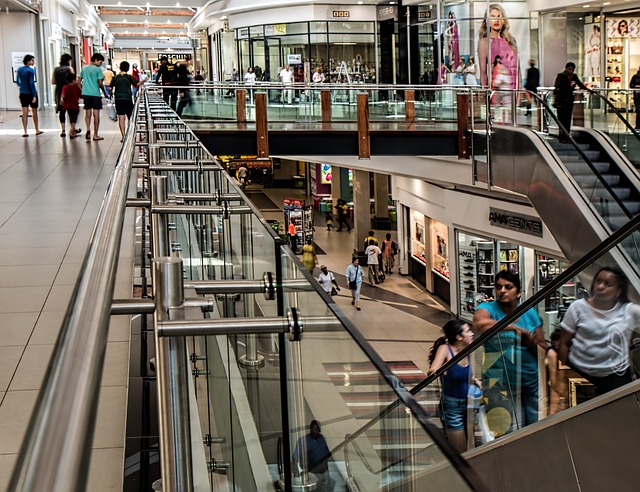
- Schools and Universities: Educational institutions, including elementary, middle, and high schools, as well as colleges and universities, are unfortunately common targets for mass shootings.
- Workplaces: Offices, factories, warehouses, and other places of employment may be targeted by individuals seeking to harm coworkers or supervisors.
- Public Spaces: Public spaces such as parks, shopping malls, concert venues, and entertainment centers are often frequented by large crowds and may be targeted for mass shootings.
- Places of Worship: Churches, mosques, synagogues, temples, and other places of worship may be targeted during religious services or gatherings.
- Government Buildings: Government offices, courthouses, city halls, and other administrative buildings may be targeted as symbols of authority or political grievances.
- Healthcare Facilities: Hospitals, clinics, and medical centers may be targeted by individuals seeking to harm patients, staff, or visitors.
- Transportation Hubs: Airports, train stations, bus terminals, and other transportation hubs may be targeted due to the high volume of travelers and potential for disruption.
- Community Events: Community events such as festivals, parades, fairs, and sporting events may be targeted for mass shootings due to the large crowds and festive atmosphere.
- Nightclubs and Bars: Nightlife venues such as bars, nightclubs, and lounges may be targeted by individuals seeking to cause harm or create chaos.
- Residential Areas: Residential neighborhoods and apartment complexes may also be subject to mass shootings, particularly in cases of domestic violence or disputes among neighbors.
Understanding the potential locations where mass shootings may occur is essential for preparedness and prevention efforts, as well as for ensuring a swift and effective response in the event of an incident.
Debriefing and Psychological Support
In the aftermath of a mass shooting incident, debriefing sessions between law enforcement agencies and other responders are essential for processing the emotional impact of the event and ensuring the well-being of all involved. These debriefings provide an opportunity for individuals to share their experiences, express their emotions, and receive support from their peers and colleagues.

Processing the Emotional Impact
Mass shooting incidents can have a profound emotional impact on those involved, including law enforcement officers, Crime Scene Investigators (CSIs), medical personnel, and other first responders. Witnessing scenes of violence and encountering victims with severe injuries can lead to feelings of shock, grief, anger, and helplessness. Debriefing sessions provide a safe and supportive environment for individuals to process these emotions and begin the healing process.
Sharing Experiences and Insights
Debriefings allow individuals to share their experiences and insights from the incident, providing valuable opportunities for learning and growth. By discussing their actions, decisions, and challenges faced during the response, responders can gain a deeper understanding of the incident and identify areas for improvement in future responses. This collaborative approach fosters teamwork, resilience, and camaraderie among responders.
Addressing Psychological Needs
Providing psychological support services is essential for addressing the mental health needs of responders in the aftermath of a mass shooting incident. Trauma, stress, and burnout are common among individuals who have been exposed to traumatic events, and timely intervention is critical for preventing long-term psychological harm. Psychological support services, such as emotional impact counseling, peer support groups, and stress management programs, should be readily available to all responders, regardless of rank or role.
In conclusion, debriefing sessions and psychological support services are essential components of an effective response to a mass shooting incident. By providing opportunities for individuals to process their emotions, share their experiences, and receive support from their peers, organizations can help mitigate the psychological impact of trauma and promote the well-being of their responders.
Conclusion: Bringing Order to Chaos
In the aftermath of a mass shooting incident, Crime Scene Investigators (CSIs) play a pivotal role in bringing order to chaos. Their meticulous work at the scene, from the initial assessment to the collection and preservation of evidence, is essential for unraveling the events of the tragedy and identifying those responsible.
Through careful documentation and analysis, CSIs and law enforcement officers piece together the puzzle of the shooting, reconstructing the sequence of events and identifying key details that may have been overlooked amidst the chaos. Their attention to detail and commitment to thoroughness ensure that no stone is left unturned in the pursuit of justice.
By uncovering the truth behind the shooting and holding perpetrators accountable for their actions, CSIs and Detectives help to bring a sense of closure and resolution to those affected by the tragedy. Their work is a testament to the resilience of the human spirit and the unwavering pursuit of truth and justice in the darkest of times.
I trust this article has been informative. Should you have any comments or questions, feel free to leave them below. Furthermore, consider reading my article on the impact of social media on crime scene investigations.
Additionally, for those interested in safeguarding their family and home, please visit my other website for a cost-effective and comprehensive strategy.
Willie McCain
